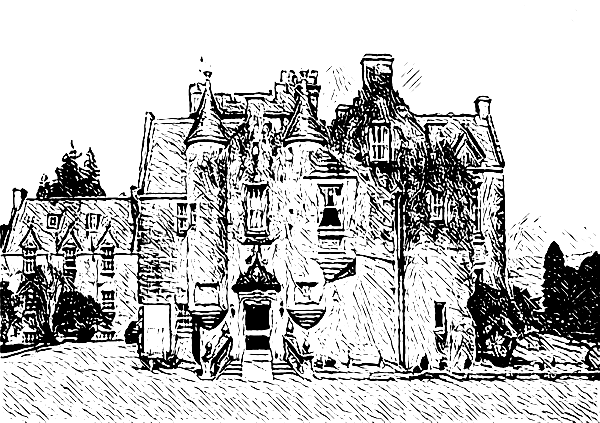
Close

Built: 1837
Stonefield Castle was built in 1837 on the site of the previous home known as Barmore. Dating back to the early 18th century, Barmore was constructed by the MacAlister family, who previously owned the nearby Tarbert Castle as tenants of the Duke of Argyll. As the castle fell into disrepair, the MacAlister laird was sued by the Duke for neglecting the property and he built Barnore in its stead. The Stonefield Castle you see today was commissioned by the grandson of Lord Stonefield, John Campbell, and was designed by Edinburgh architect William Henry Playfair, who has designed many of Edinburgh’s iconic neoclassical buildings.

John Campbell of Stonefield – Born in 1720 and Died in Edinburgh, Scotland in 1801, Married Grace Stuart, Phoebe Lloyd
John Campbell – Born in 1788 and Died in 1857
Grace Stuart – Born in 1725 and Died in 1783
Phoebe Lloyd – Born in ~1756 and Died in 1818
Colin Campbell – Born in 1760 and Died in 1839
William Henry Playfair – Architect- Born in 1790 and Died in 1857
Located on the lower slopes of Knapdale Forest on the west coast of Scotland, Stonefield Castle is a rubble-built Scottish baronial mansion house that sits to the north of the Barmore valley, overlooking an awe-inspiring loch. Renowned for its magnificent collection of flora and fauna, which comprises a diverse selection of species and cultivars, Stonefield Castle is quite simply one of a kind.
Archibald Campbell, Sheriff of Argyll, originally purchased the Barmore estate from Archibald MacAlister of Tarback in 1746, but it was his great-great grandson who developed the deteriorating castle in the early 19th century. Designed by one of Edinburgh’s most prominent architects – William Henry Playfair – Stonefield Castle comprises crowsteps, a crenellated tower, and turrets with conical roofs, as well as a diverse range of ancillary buildings, including a viaduct bridge, stable and coach house, tower folly, mausoleum, and lodge houses – all of which stand to this day.
Stonefield Castle remained in the Campell family throughout the 18th, 19th, and 20th centuries and, owing to the family’s keen interest in horticulture, Stonefield has become an incredibly successful example of mid-19th century woodland garden development. With the west coast of Scotland being recognised as a location where tender trees and shrubs could flourish, the gardens at Stonefield Castle boast a collection of deciduous trees, shrubs, conifers, ferns and perennials, including rhododendrons, camellias and other rare plants from the Himalayas, China, Japan and New Zealand.
This horticultural legacy is largely indebted to Dr. Archibald Campbell, who was referred to as the aristocrat of the magnolia species, and who also introduced many varieties of Himalayan rhododendron to Scotland. More than twenty rhododendron varieties were sent to Stonefield from a plant hunting expedition to the Himalayas undertaken by Dr. Archibald Campbell and Sir Joseph Dalton Hooker, who named Magnolia Campbellii after Dr. Campbell. Even after the house was sold by the Campbells in the middle of the 20th century, the gardens were maintained by David G. Hannah, a renowned expert on rhododendrons.
In addition to having gardens that provide refuge for birds and other wildlife, a remarkable number of champion trees, and the oldests living eucalyptus in Britain – recorded as having been planted in 1881 – Stonefield Castle is a wondrous example of baronial architecture surrounded by the glory of nature.